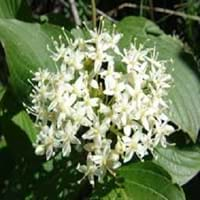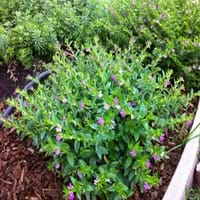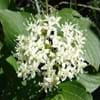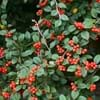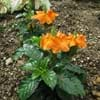Life Span
Perennial
Perennial
Origin
United States, Northeastern United States, Mid-Atlantic United States, Southeastern United States
Mexico, Central America
Types
not available
Not Available
Habitat
Banks, Lake Sides, Shores of rivers or lakes
Tropical areas
USDA Hardiness Zone
5-8
9-15
Sunset Zone
3b, 4, 5, 6, 7, 8, 9
H1, H2, 16, 17, 18, 19, 20, 21, 22, 23, 24
Habit
Oval or Rounded
Cushion/Mound-forming
Flower Color
Ivory
White, Pink, Light Pink, Lavender, Violet
Flower Color Modifier
Not Available
Not Available
Fruit Color
White
Non Fruiting Plant
Leaf Color in Spring
Green, Dark Green
Light Green, Dark Green
Leaf Color in Summer
Dark Green
Dark Green
Leaf Color in Fall
Dark Green, Brown, Dark Red
Dark Green
Leaf Color in Winter
Not Available
Dark Green
Leaf Shape
Acuminate
Oblong to lance-shaped
Plant Season
Summer, Fall
Spring, Summer, Fall, Winter
Sunlight
Full Sun, Partial Sun, Partial shade
Full Sun, Partial Sun, Partial shade
Growth Rate
Medium
Medium
Type of Soil
Clay, Loam, Sand
Clay, Loam, Sand
The pH of Soil
Acidic, Neutral, Alkaline
Acidic, Neutral, Alkaline
Soil Drainage
Average
Well drained
Bloom Time
Early Summer
Indeterminate
Tolerances
Wet Site
Drought
Where to Plant?
Ground, Pot
Ground, Pot
How to Plant?
Cuttings, Divison, Stem Cutting
Cuttings, Divison, Layering, Seedlings
Plant Maintenance
Medium
Medium
Watering Requirements
Average Water Needs
Needs watering once a week, Requires more often in extreme heat
In Summer
Lots of watering
Lots of watering
In Spring
Moderate
Moderate
In Winter
Average Water
Average Water
Soil pH
Acidic, Neutral, Alkaline
Acidic, Neutral, Alkaline
Soil Type
Clay, Loam, Sand
Clay, Loam, Sand
Soil Drainage Capacity
Average
Well drained
Sun Exposure
Full Sun, Partial Sun, Partial shade
Full Sun, Partial Sun, Partial shade
Pruning
Remove damaged leaves, Remove dead branches, Remove dead leaves
Prune if you want to improve plant shape
Fertilizers
All-Purpose Liquid Fertilizer
14-14-14 Fertilizer
Pests and Diseases
Red blotch
Free of serious pests and diseases
Plant Tolerance
Drought
Drought
Flower Petal Number
Single
Single
Foliage Texture
Medium
Medium
Foliage Sheen
Matte
Glossy
Attracts
Birds
Butterflies
Allergy
Unknown
no allergic reactions
Aesthetic Uses
Ground Cover, Wild gardens, Woodland margins
Borders, Ground Cover
Beauty Benefits
Not Available
Not Available
Environmental Uses
Air purification
Air purification
Medicinal Uses
Not Available
Dysentry, Eye Infection, Indigestion, Organ Stones
Part of Plant Used
Not Available
Flowering Tips, Flowers, Leaves, Shoots, Stem
Other Uses
Acts as a natural source of rain water for birds and insects.
Showy Purposes
Used As Indoor Plant
No
Yes
Used As Outdoor Plant
Yes
Yes
Garden Design
Foundation, Hedges, Mixed Border, Screening, Wind Break
Bedding Plant, Container, Edging, Foundation, Groundcover, Hanging Basket, Mixed Border
Botanical Name
CORNUS amomum
CUPHEA hyssopifolia
Common Name
red willow
False Heather, Mexican Heather, Hawaiian Heather
In Hindi
silky dogwood
Mexican Heather
In German
silky dogwood
Mexican Heather
In French
silky dogwood
Mexicaine Heather
In Spanish
silky dogwood
Heather mexicana
In Greek
silky dogwood
Μεξικού Heather
In Portuguese
silky dogwood
Mexican Heather
In Polish
silky dogwood
Mexican Heather
In Latin
silky dogwood
Mexicanus Heather
Phylum
Magnoliophyta
Magnoliophyta
Class
Magnoliopsida
Magnoliopsida
Family
Cornaceae
Lythraceae
Clade
Angiosperms, Asterids, Eudicots
Angiosperms, Eudicots, Rosids
Tribe
Not Available
Not Available
Subfamily
Not Available
Lythroideae
Number of Species
Not Available
Not Available
Season and Care of Silky Dogwood and Mexican Heather
Season and care of Silky Dogwood and Mexican Heather is important to know. While considering everything about Silky Dogwood and Mexican Heather Care, growing season is an essential factor. Silky Dogwood season is Summer and Fall and Mexican Heather season is Summer and Fall. The type of soil for Silky Dogwood is Clay, Loam, Sand and for Mexican Heather is Clay, Loam, Sand while the PH of soil for Silky Dogwood is Acidic, Neutral, Alkaline and for Mexican Heather is Acidic, Neutral, Alkaline.
Silky Dogwood and Mexican Heather Physical Information
Silky Dogwood and Mexican Heather physical information is very important for comparison. Silky Dogwood height is 180.00 cm and width 180.00 cm whereas Mexican Heather height is 20.30 cm and width 30.40 cm. The color specification of Silky Dogwood and Mexican Heather are as follows:
Silky Dogwood flower color: Ivory
Silky Dogwood leaf color: Green and Dark Green
Mexican Heather flower color: White, Pink, Light Pink, Lavender and Violet
- Mexican Heather leaf color: Light Green and Dark Green
Care of Silky Dogwood and Mexican Heather
Care of Silky Dogwood and Mexican Heather include pruning, fertilizers, watering etc. Silky Dogwood pruning is done Remove damaged leaves, Remove dead branches and Remove dead leaves and Mexican Heather pruning is done Prune if you want to improve plant shape. In summer Silky Dogwood needs Lots of watering and in winter, it needs Average Water. Whereas, in summer Mexican Heather needs Lots of watering and in winter, it needs Average Water.
